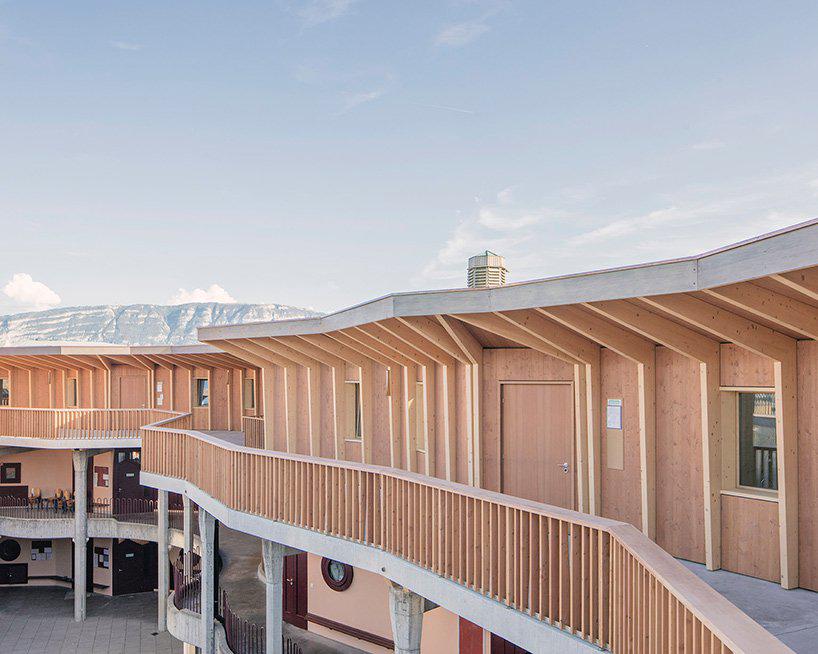LOCALARCHITECTURE extends rudolf steiner school with technology and age-old expertise
designboom_LOCALARCHITECTURE has expanded a school in switzerland, adding a new storey containing seven wood-paneled classrooms. the rudolf steiner school of geneva was originally completed by architect jean-jacques tschumi in the late 1980s and is described as a celebration of the austrian philosopher’s assertions. the school buildings are characterized by their organic forms, enclosing a courtyard that is oriented towards the landscape and follows the sun’s path across the sky.
LOCALARCHITECTURE began the project by analyzing the site, its access routes and buildings, and their qualities and defects. importantly, the design team also took into account the spirit of the place, its inspirations and aspirations. the architects worked organically with tschumi’s design to heighten its inherent structuring principle using 3D technology. after asserting that a new storey was the solution, the main staircase was extended, leading to a new level comprising seven classrooms.
the existing concrete structure supports the new framework with a new covered walkway connecting the classrooms. ‘the teaching spaces represent a 3D synthesis of the nine-sided classroom floorplans and the ‘topographical’ roof crowning the new structure, incorporating large skylight windows, while a large glazed façade overlooks the salève mountain,’ explains LOCALARCHITECTURE. ‘digital design and production technologies have fulfilled aspirations expressed on paper 30 years ago.’
LOCALARCHITECTURE began the project by analyzing the site, its access routes and buildings, and their qualities and defects. importantly, the design team also took into account the spirit of the place, its inspirations and aspirations. the architects worked organically with tschumi’s design to heighten its inherent structuring principle using 3D technology. after asserting that a new storey was the solution, the main staircase was extended, leading to a new level comprising seven classrooms.
the project involved close collaboration with the carpenter, ateliers casaï. the use of 3D technology brought together cutting-edge technology and age-old expertise — a close partnership that allowed the architect to become more intimately involved in the physical production of the building. the students themselves even took part in the construction process, with tours following the progress at key phases giving them an understanding of its implementation. the project received a best architects 20 award for 2019.

